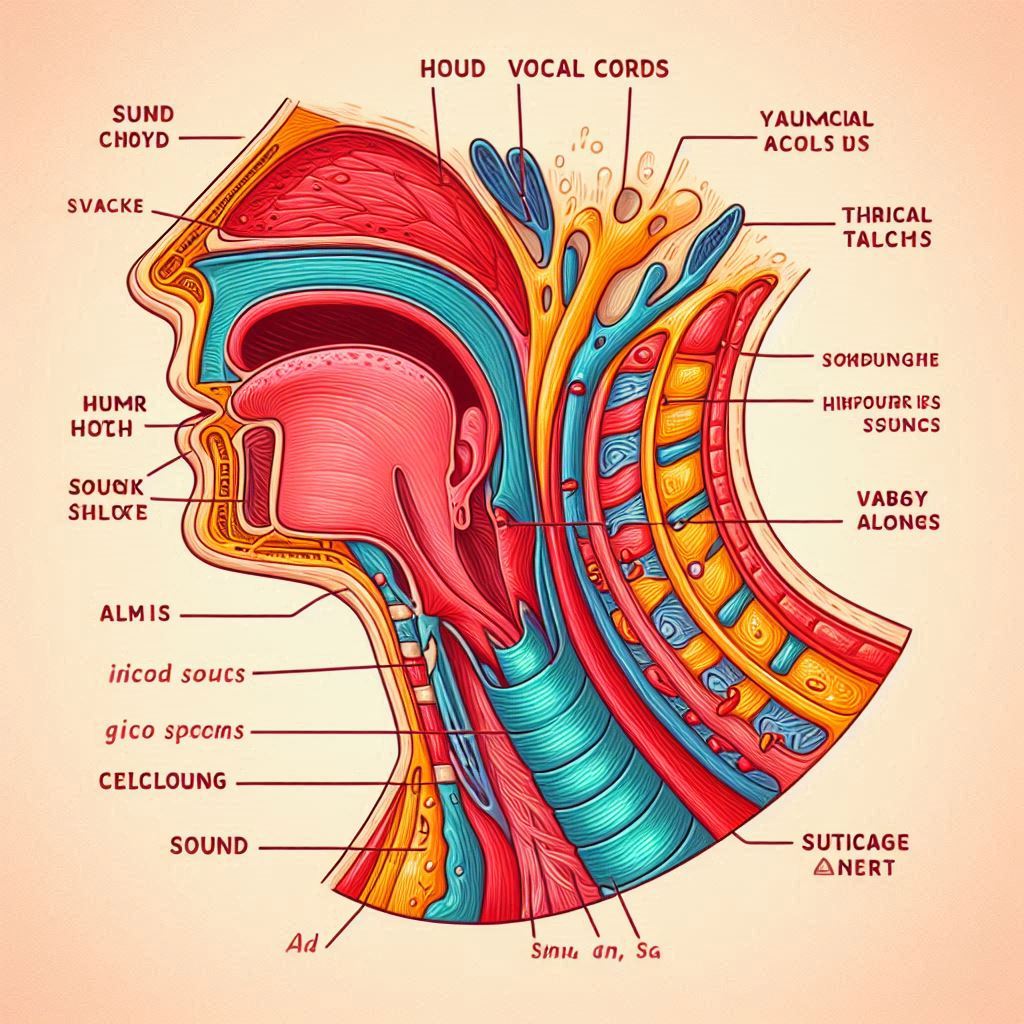Introduction
Singing is a complex and beautiful art form that combines various physiological processes to produce sound. Understanding the science behind how your voice works can help you appreciate the intricacies of singing and improve your vocal technique. This guide delves into the anatomy of the vocal apparatus, the mechanics of sound production, and the factors that influence vocal quality.
Thank you for reading this post, don't forget to subscribe!Anatomy of the Vocal Apparatus
The Vocal Cords
The vocal cords, also known as vocal folds, are two bands of muscle tissue located in the larynx (voice box). When you sing or speak, air from your lungs passes through the vocal cords, causing them to vibrate and produce sound.
The Larynx
The larynx, situated in the throat, houses the vocal cords and plays a crucial role in sound production. It also acts as a valve to protect the airway during swallowing and regulate airflow during breathing and phonation (sound production).
The Diaphragm
The diaphragm is a dome-shaped muscle located below the lungs. It is essential for breathing and provides the necessary breath support for singing. When you inhale, the diaphragm contracts and moves downward, allowing the lungs to expand and fill with air.
The Resonators
Resonators are parts of the body that amplify and modify the sound produced by the vocal cords. The primary resonators include the throat (pharynx), mouth, and nasal passages. These structures enhance the richness and volume of your voice.
The Mechanics of Sound Production
Breath Support
Proper breath support is fundamental for effective singing. It involves using the diaphragm and other respiratory muscles to control airflow and maintain consistent breath pressure.
Diaphragmatic Breathing
Diaphragmatic breathing, also known as belly breathing, is essential for strong breath support.
- Sit or stand with a straight back.
- Place one hand on your chest and the other on your abdomen.
- Inhale deeply through your nose, allowing your abdomen to expand while keeping your chest still.
- Exhale slowly through your mouth, feeling your abdomen contract.
Phonation
Phonation is the process of producing sound by vibrating the vocal cords. It occurs when air from the lungs passes through the closed vocal cords, causing them to vibrate. The pitch and volume of the sound depend on the tension, length, and mass of the vocal cords.
Resonance
Resonance enhances the quality and richness of your voice. It occurs when the sound produced by the vocal cords is amplified and modified by the resonators.
Head Resonance
Head resonance is associated with higher pitches and is felt in the facial bones and skull.
Chest Resonance
Chest resonance is associated with lower pitches and is felt in the chest and sternum.
Factors Influencing Vocal Quality
Pitch and Frequency
Pitch is determined by the frequency of vocal cord vibrations. Faster vibrations produce higher pitches, while slower vibrations produce lower pitches. The length, tension, and mass of the vocal cords influence their vibration frequency.
Timbre
Timbre, also known as vocal color or tone quality, is the unique quality of your voice that distinguishes it from others. It is influenced by the shape and size of your vocal tract, resonators, and articulators (lips, tongue, and palate).
Volume
Volume is controlled by the amount of air pressure from the lungs and the degree of vocal cord closure. Greater air pressure and tighter vocal cord closure produce louder sounds.
Articulation
Articulation involves the movement of the lips, tongue, and other articulators to shape and modify sounds into recognizable speech or singing. Clear articulation is essential for precise and expressive singing.
Common Vocal Techniques
Vocal Warm-Ups
Warming up your voice prepares your vocal cords and muscles for singing, reducing the risk of strain and injury.
Lip Trills
- Relax your lips and blow air through them, creating a “brrr” sound.
- Glide up and down your vocal range while maintaining the lip trill.
Humming
- Close your lips and hum gently, feeling the vibrations in your lips and chest.
- Glide up and down your range slowly.
Breath Control Exercises
Hissing Exercise
- Take a deep diaphragmatic breath.
- Exhale slowly, producing a hissing sound.
- Maintain a steady hiss for as long as possible.
Pitch Accuracy
Matching Pitches
- Use a piano or keyboard app to play a note.
- Sing the note, matching the pitch as closely as possible.
Resonance Exercises
Yawning Technique
- Simulate a yawn, feeling the space at the back of your throat open up.
- Sing a vowel sound while maintaining this open space.
Maintaining Vocal Health
Hydration
Staying hydrated is crucial for keeping your vocal cords lubricated and flexible. Drink plenty of water throughout the day and avoid excessive caffeine and alcohol.
Proper Rest
Resting your voice, especially after extensive use, helps prevent vocal fatigue and injury. Ensure you get adequate sleep to support overall vocal health.
Avoiding Vocal Strain
Avoid excessive shouting, whispering, and talking over loud noises, as these can strain your vocal cords. Practice proper vocal technique to minimize the risk of strain.
FAQs
How do the vocal cords produce sound?
The vocal cords produce sound through a process called phonation. When air from the lungs passes through the closed vocal cords, it causes them to vibrate, creating sound waves.
What is the role of the diaphragm in singing?
The diaphragm is crucial for breath support in singing. It helps control airflow and maintain consistent breath pressure, allowing for better vocal control and power.
How does resonance affect vocal quality?
Resonance amplifies and enhances the sound produced by the vocal cords, adding richness and volume to the voice. It occurs in the resonators, such as the throat, mouth, and nasal passages.
Why is hydration important for singers?
Hydration keeps the vocal cords lubricated and flexible, reducing the risk of strain and injury. Proper hydration supports overall vocal health and performance.
What are some effective vocal warm-up exercises?
Effective vocal warm-up exercises include lip trills, humming, and scales. These exercises prepare the vocal cords and muscles for singing, reducing the risk of strain.
How can I improve my breath control for singing?
Improve breath control through diaphragmatic breathing exercises and practices like the hissing exercise. These exercises enhance lung capacity and breath support.
Conclusion
Understanding the science behind singing can enhance your appreciation of the art and improve your vocal technique. By learning how your voice works and incorporating effective practices, you can enhance your vocal performance and maintain a healthy voice. Whether you’re a beginner or an experienced singer, these insights and tips will help you harness the full potential of your voice.



